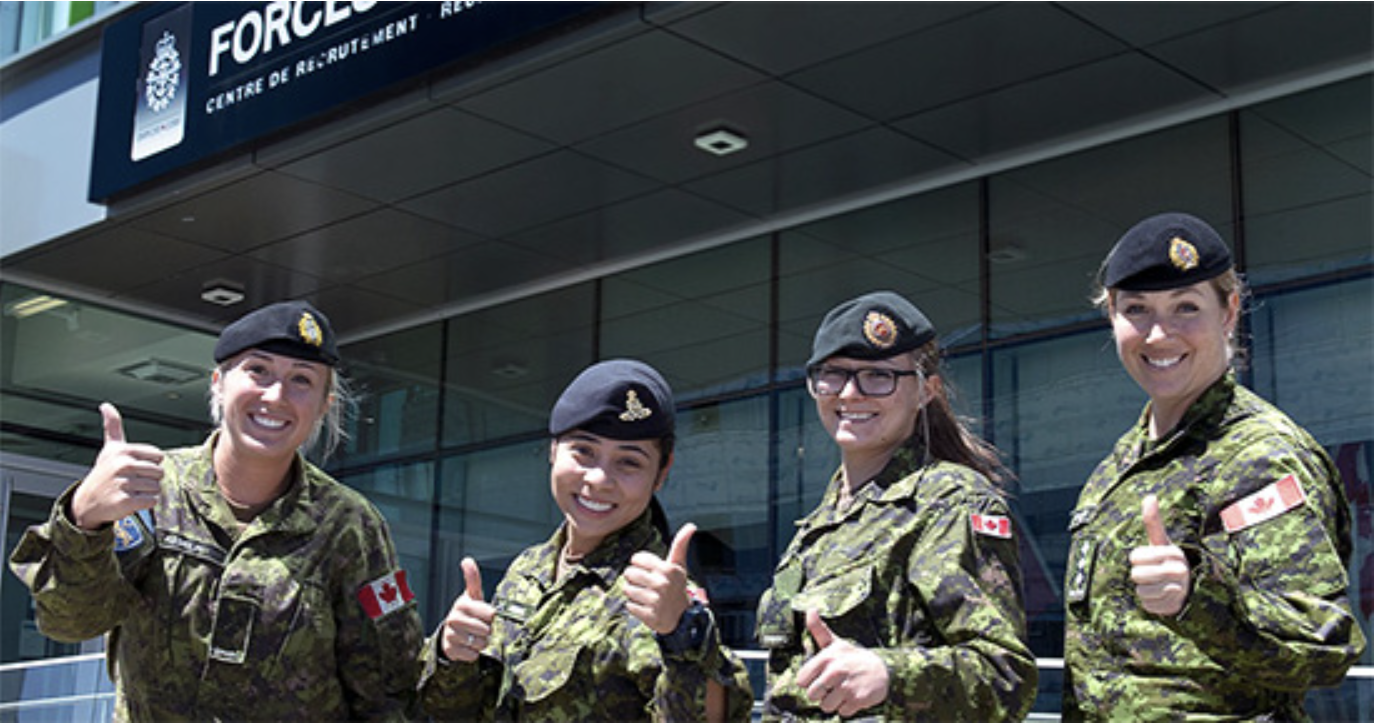By Michel Drapeau
It is easy to conclude that unemployment is currently low which always makes it harder to recruit, AND this despite that the wages and benefits offered by the service are second to none. Some will argue that low recruitment is but a latent fall-out from covid-19 because levels of depression, anxiety, and other mental health conditions exploded among our young who also faced various levels of social isolation. Others note that over the past few years, many of our youths spent less time with peers and are proving more likely to delay big life decisions, including going to college or joining up.
The sad truth, however, is that the dominating cause for the recruiting shortfalls, embracing all else, is that popular support for the military, which is crucial to maintain confidence in our armed forces, has sharply fallen since so many of our senior military leaders – current and former – have been sidelined, investigated or forced into retirement for alleged sexual misconduct. These leadership scandals have, and continues to have, a knock-on effect on recruiting which has now plummeted to historical low levels.
Ultimately, the military will not be able achieve its recruiting objectives without gaining the commitment of ten of thousands of young people every year. This means not only the support of such potential recruits, but also of their families, friends, teachers and other influential community members. Until Canadians are able to genuinely express confidence and respect for the military as an institution, recruiting will remain at the current low level.
Given the current negative brand image of the Canadian military and, hence, the urgent need to manage its corporate social performance, the military needs to work tirelessly to restore its tarnished image and build a layered approach to rectifying the current crisis situation. But, they cannot do this on their own. Rehabilitation of the brand requires an image-repair strategy designed and controlled by civil society. Such a strategy should be dominated by ‘outside-the-box’ thinking including, for example, three measures briefly described below.
CHANGE AGENT
These following proposed changes if implemented will signal to the citizenry that government recognizes who and what needs to be changed and is committed to making the required changes. Most Canadians would recognize such a change agent as a significant and important first step in ameliorating the public image of the military.
a. The CDS, VCDS and Commanders of the Navy, Army and Air Force hold unequalled positions of importance and responsibility in the security of the nation and the defence of our vital interests. Each should be appointed by the Governor in Council in accordance with the established selection and appointment process. The CDS should no longer has the exclusive power to appoint officers to these highest ranks and positions.
b. Appoint a new military leadership team. The military needs to have a new and younger senior leadership team appointed who possess the energy, charisma, leadership and diversification required to lead the forces past the current crisis.
c. Implement the Arbour Report. Without any further delay, Cabinet should direct the CDS to implement the many recommendations made last year by Justice Arbour. That report which already incorporates most of the unfulfilled recommendations made in 2015 by Justice Deschamps; in 2017 and 2018 by the Auditor General; and in 2021 by Justice Fish is a sine qua non for restoring public confidence and improving the CAF image.
RECRUITING RECOMMENDATIONS
The following recommendations are specifically in response to a call by the Minister of National Defence for a national conversation to help develop innovative solutions to challenging recruiting problems.
1. First and foremost, at present females account for 15% of the Regular Force. The very real problems with sexual harassment and assault are more than likely deterring more women from serving. The sooner the CAF are directed to implement the recommendations made by Justice Arbour the more likely more young women would consider enrolling in the force.
2. The Reserves, and in particular the Militia which dates back to the 16th century in the New France, have always emphasized the necessity for local recruiting and training of a volunteer force. Conceptually, Reserves should form the backbone of the future CAF recruiting organization; each reserve armoury becoming a de facto recruiting centre. These armouries should provide a basis for finding and establishing relationships with young people and encouraging them to consider military service and learn about life in the military.
3. When in public, members of the CAF are brand ambassadors. Having them stroll about in combat fatigues (commonly referred to as combat pyjamas) among the general population is not appropriate. In doing so, they are not projecting the proper image required to recruit top tier candidates to military service. Uniforms are an integral part of being a sailor, soldier, and airperson.
They serve as a symbol of strength, power, professionalism, and discipline. In short, the appearance of our military is important because it strengthens the bond between members, shows respect for the institution, projects a distinguished image to Canadians, and demonstrates loyalty to the
organization.
For as long as I can remember the military has relied upon an unbroken stream of willing volunteers to fill its ranks in times of peace and war. However, most of the trends that have created the present recruiting crisis will not change anytime soon. If left unaddressed any longer, they could soon threaten the ability of our all-volunteer force to protect the nation. Without urgent action to improve recruiting, the military may find itself continuing to involuntarily shrink to become a force soon to be too small to address the growing security challenges facing Canada.


